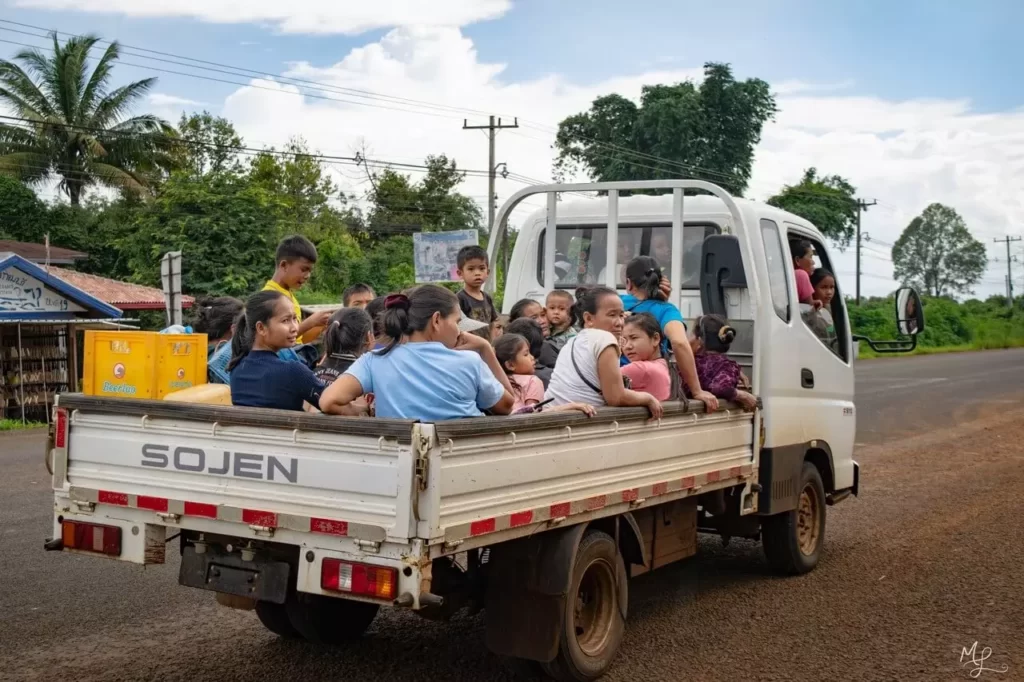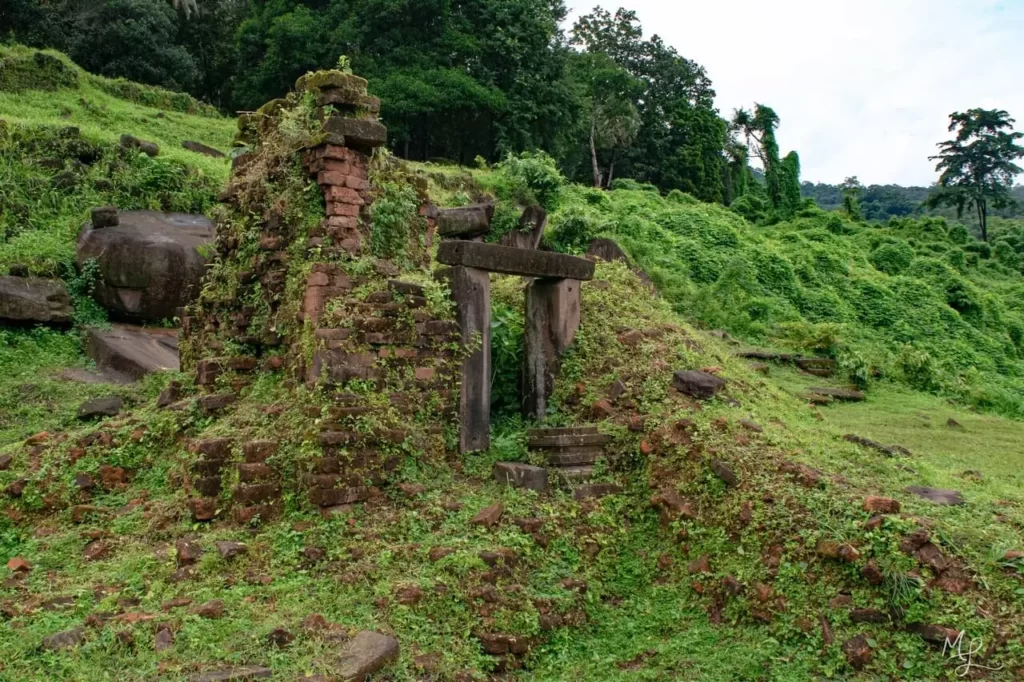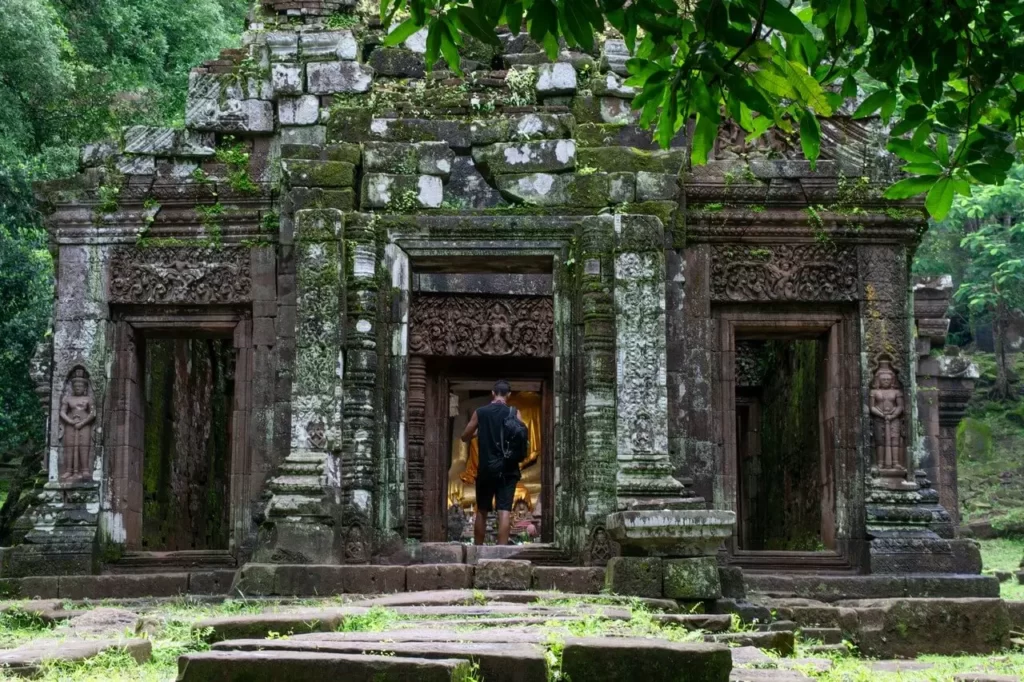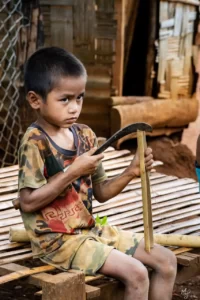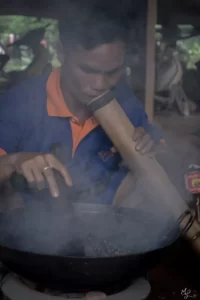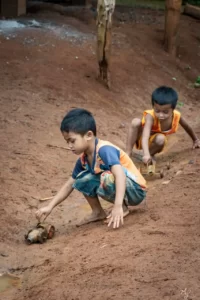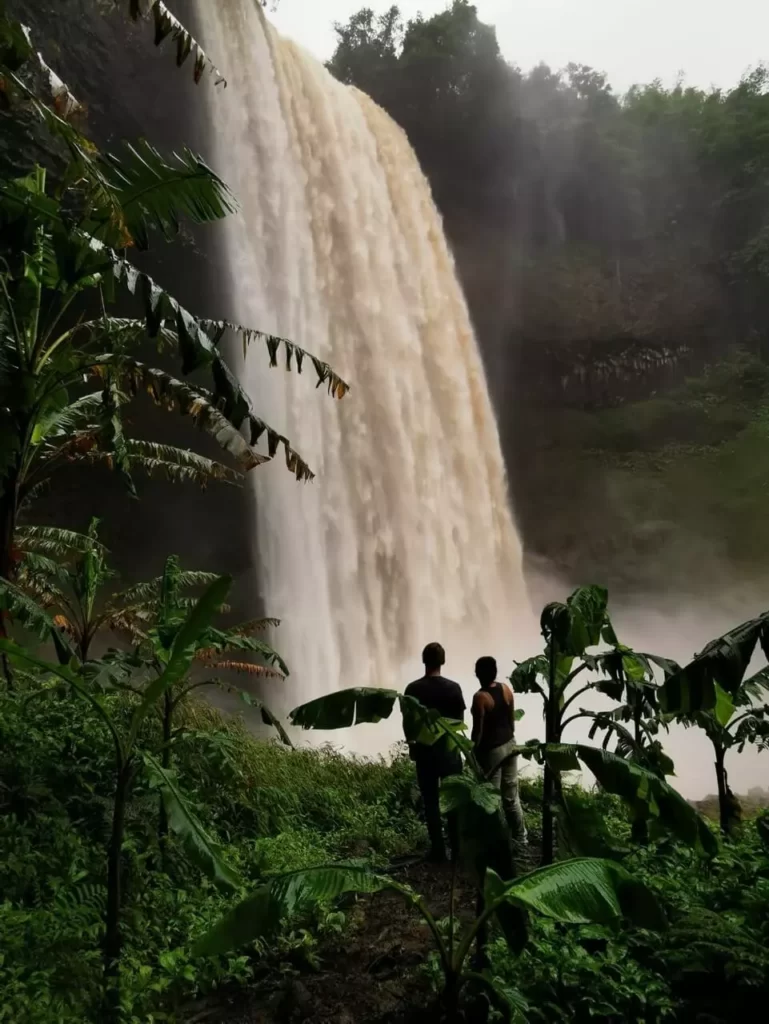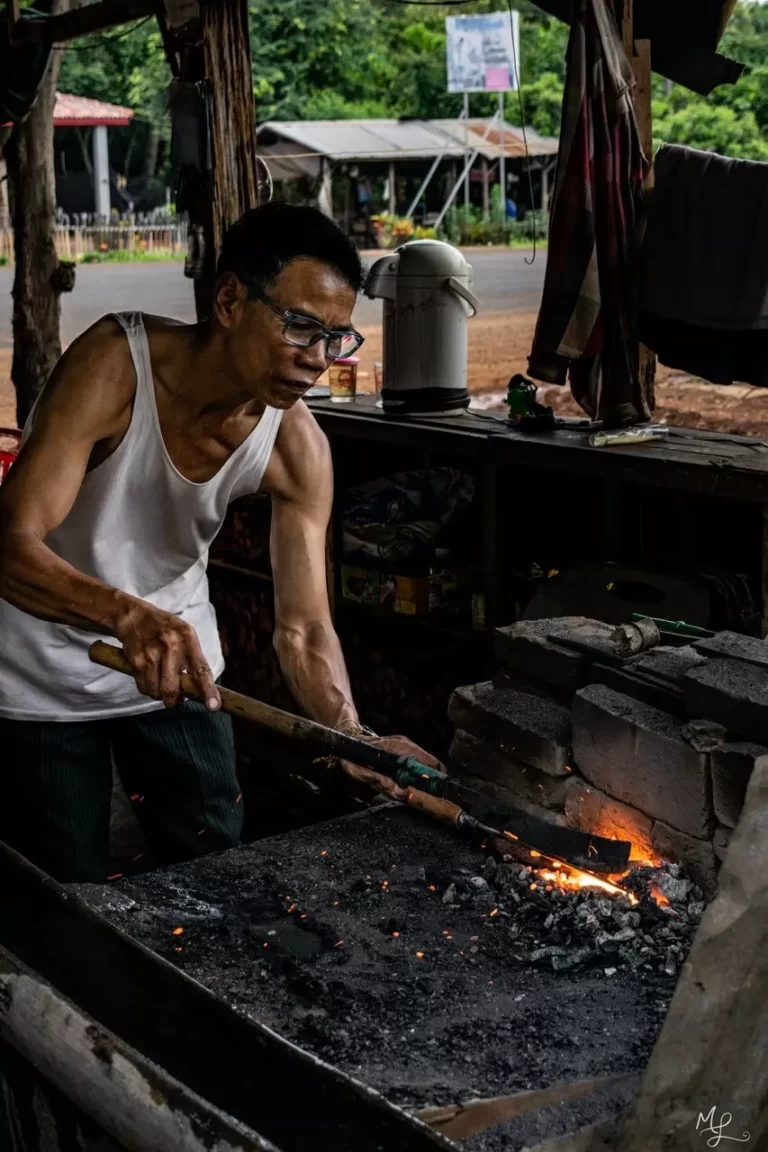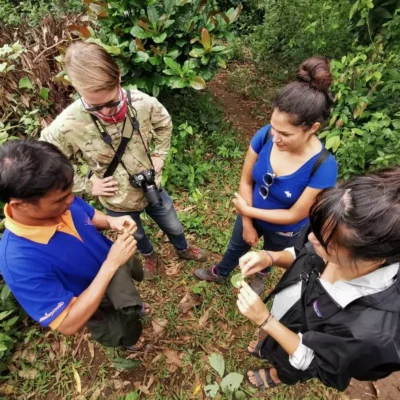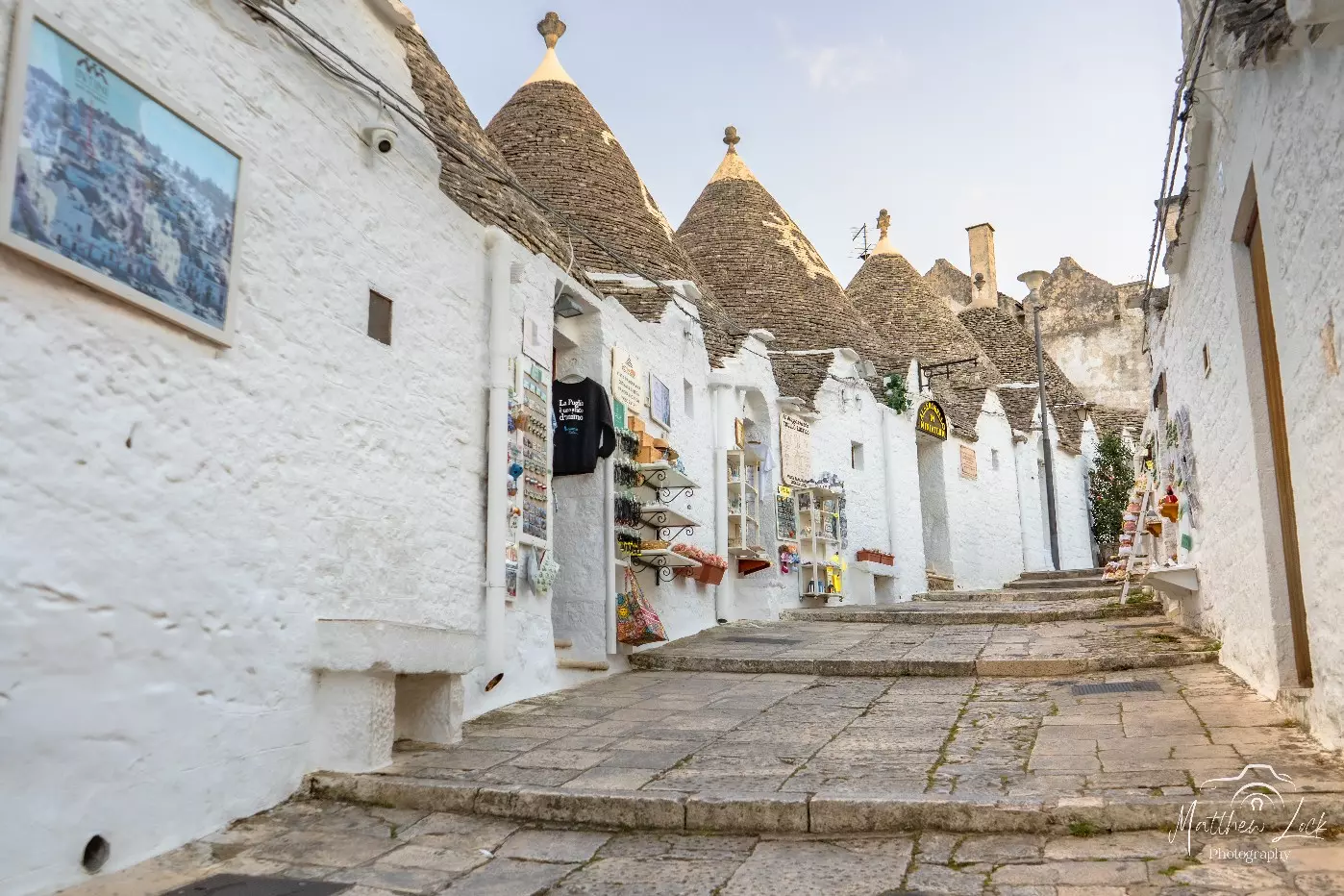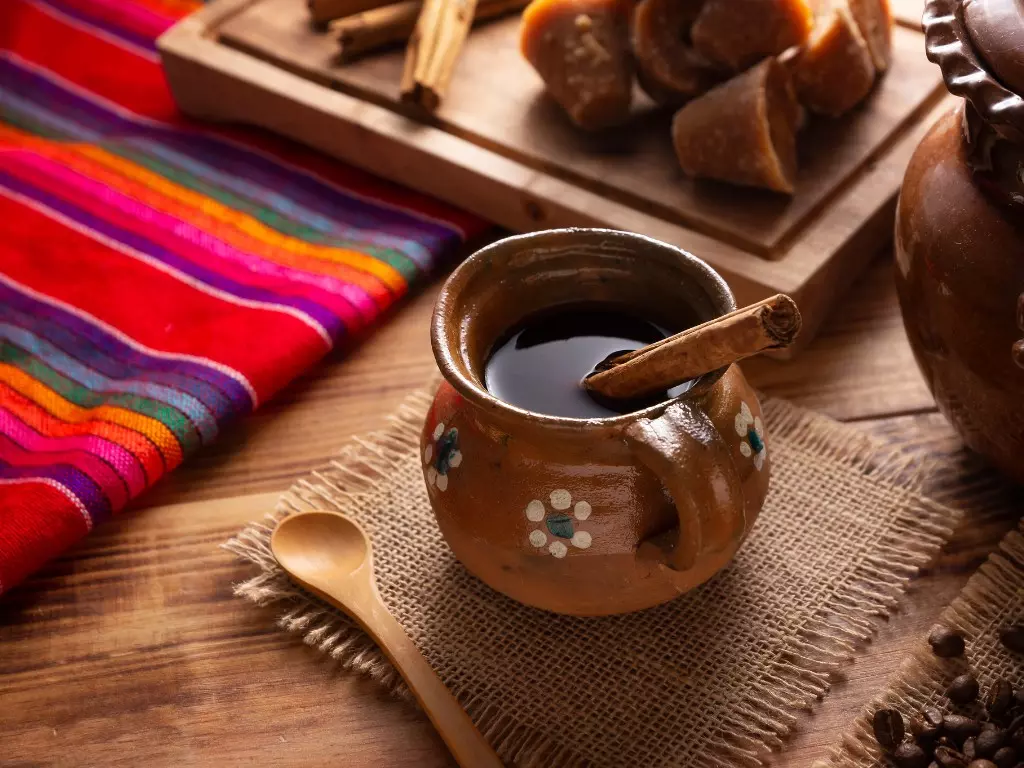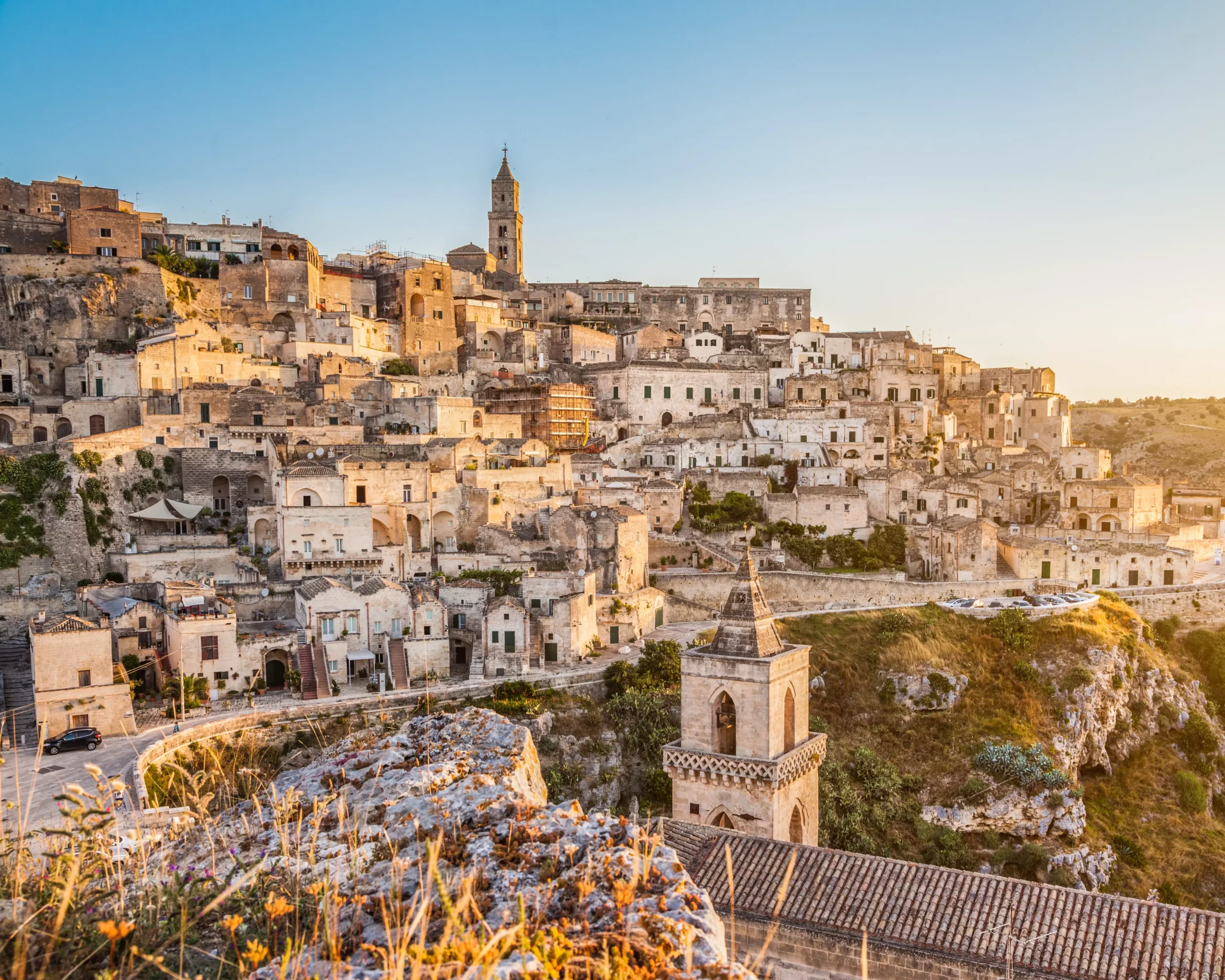After buying a motorbike and riding through Vietnam and Cambodia, I decided to keep it a little longer for one last ride into Laos a decision I absolutely didn’t regret. Entering southern Laos from Cambodia, I had plans to eventually sell the bike in Vientiane. But after spending a few days soaking up the chill island vibes of the Four Thousand Islands, I kept hearing whispers of a motorbike route near Pakse, one filled with dramatic waterfalls, tribal villages, and lush coffee farms. Naturally, I had to see it for myself.
I rolled into Pakse with zero expectations and a full tank of petrol, ready to take on what’s known as the Bolaven Plateau Loop. There are two ways to tackle it: the short loop, which can be done in two or three days, and the long loop, which covers more remote areas and takes about five days. I, of course, opted for the long route, more waterfalls, fewer tourists, and plenty of chances to get lost in the best way possible.
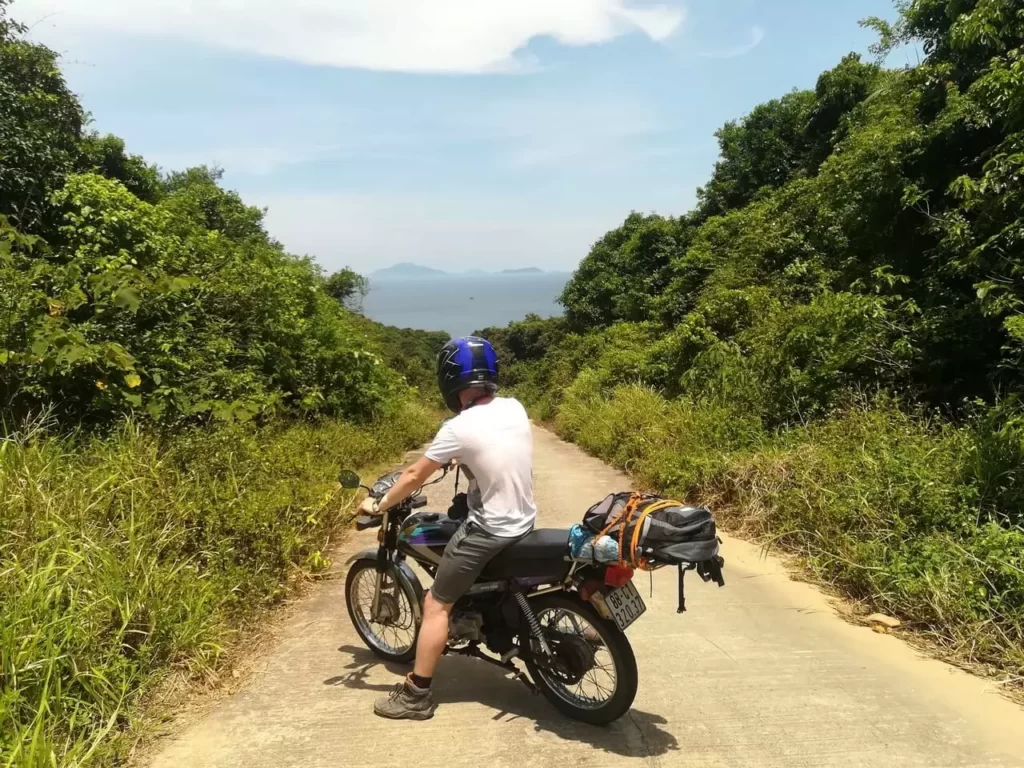
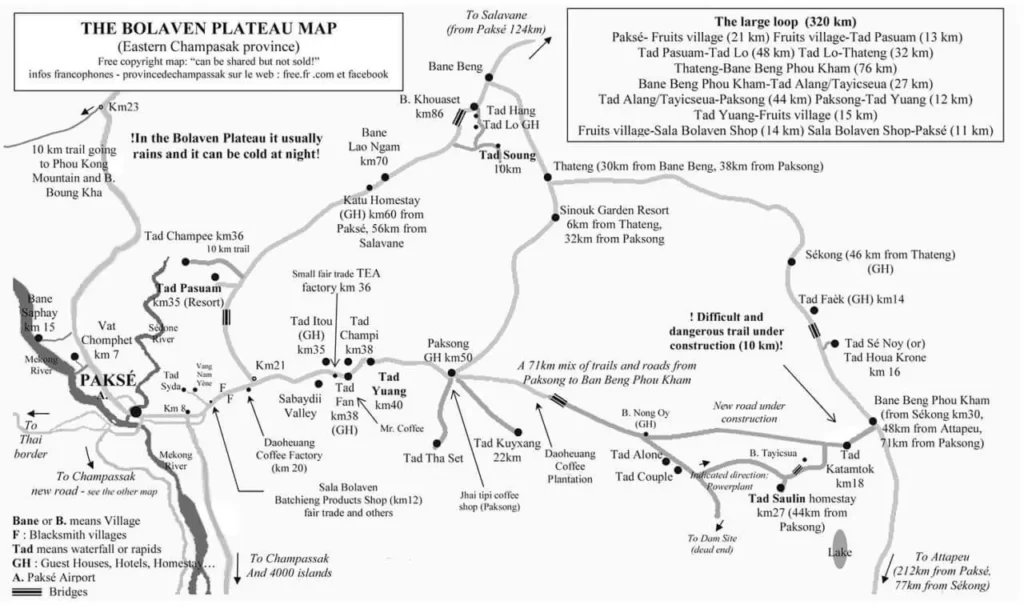
What is the Bolaven Plateau Loop?
The Bolaven Plateau Loop is a scenic motorbike circuit in southern Laos that starts and ends in the town of Pakse. It winds through the highlands of Champasak Province and is known for its cool climate, high-altitude coffee plantations, remote villages, and an almost ridiculous number of waterfalls that look like they were plucked from a jungle dream.
The roads are a mixed bag, some freshly paved, others more pothole than pavement but that’s half the fun. You’ll cruise past fields, jungles, waving kids, and the occasional water buffalo just casually owning the road. Expect everything from serene stretches of forest to bumpy off-road patches that’ll rattle your bones but make for great stories later.
You’ll also notice how the atmosphere shifts as you climb higher into the plateau. The air is cooler, fresher, and the scent of coffee blossoms occasionally hits you as you ride through the plantations. It’s a far cry from the humid chaos of the cities and that’s exactly why it’s special.

Short Loop vs. Long Loop
There are two main ways to tackle the Bolaven Plateau:
-
Short Loop (2–3 days): Hits the highlights, big waterfalls like Tad Fane and Tad Yuang. It’s perfect if you’re short on time or just dipping your toes into Laos’ motorbike culture. It gives you a solid taste without straying too far off-grid.
-
Long Loop (4–5 days): Takes you further off the beaten path through towns like Sekong and Thateng. You’ll see lesser-visited waterfalls, remote tribal villages, and fewer tourists. Plus, you’ll get that feeling of freedom only long open roads can offer.
I went for the long loop. More kilometres, more quiet, more real. No regrets. This route felt like the Laos I’d always imagined, untouched, welcoming, and full of unexpected beauty.
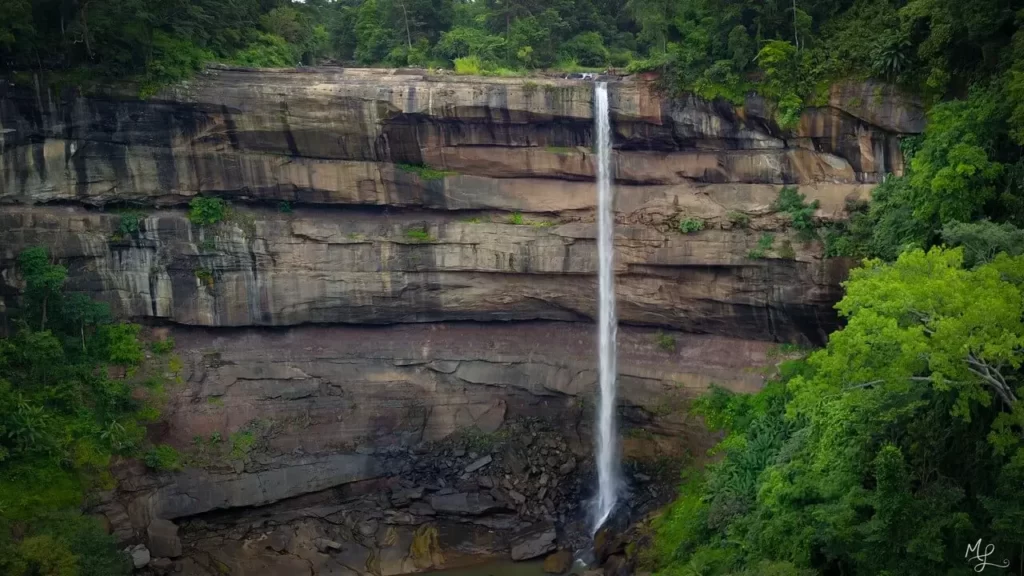
Must-See Waterfalls
There are waterfalls everywhere on the plateau, and stopping off to see them is half the joy of the ride. My favourites:
-
Tad Fane: Two massive waterfalls plunging over 100 metres into a jungle gorge. Arrive early for the misty magic and fewer crowds. There’s also a zipline for those brave enough.
-
Tad Yuang: Great for a swim and picnic. Easily accessible and has stalls nearby for snacks and local coffee. Bring your swimsuit!
-
Tad Lo: A peaceful series of falls near the village of Tad Lo. Perfect for a refreshing dip and some local interaction. Don’t be surprised if you spot kids swimming or water buffalo chilling nearby.
-
Tad Tayicseua: More hidden and less visited. There’s a bit of hiking involved, but you’ll often have the place to yourself. It’s worth the extra effort for solitude and a true jungle feel.
-
Tad Champee: Less known but incredibly picturesque. Ideal for drone shots or just soaking in the stillness.
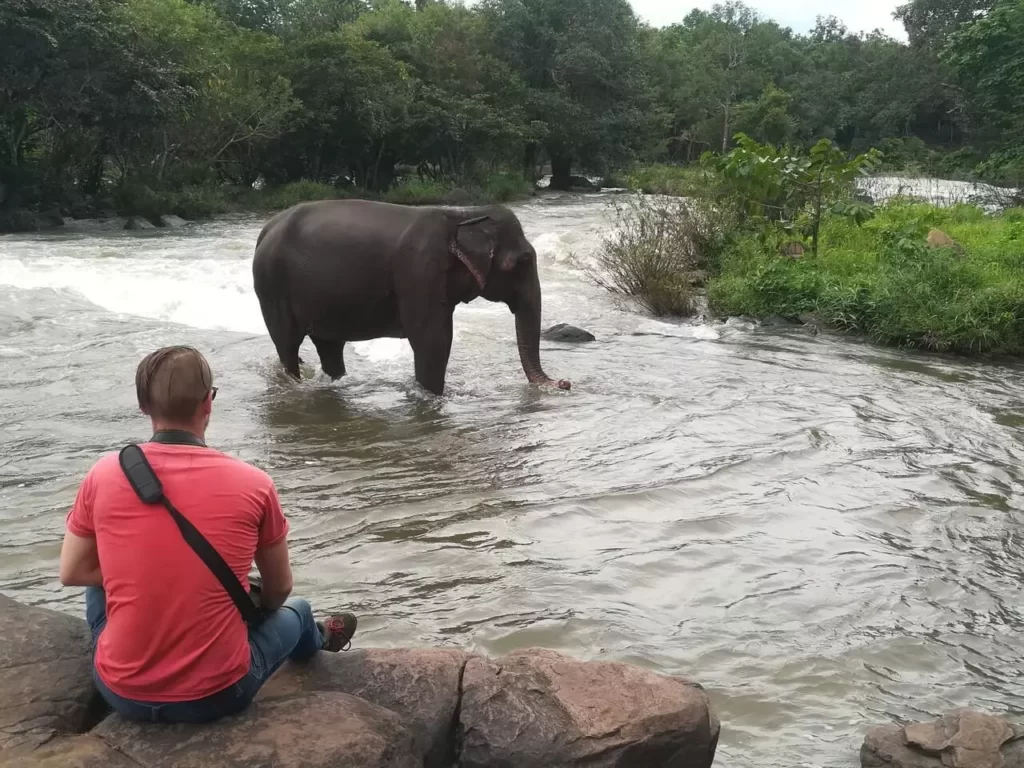
Where to Stay on the Loop
No need to book far in advance, accommodation is easy to find and usually super welcoming. Most spots are locally run, so your money supports the community.
-
Tad Lo: A popular stop, especially for long-loop riders. I stayed at Mama Pap’s, simple rooms, delicious food, and a real homestay vibe. Sitting on the balcony with a cold Beerlao was a perfect end to a long day of riding.
-
Paksong: Close to the major waterfalls, with basic but comfy places to crash. Some guesthouses also offer coffee tours.
-
Sekong: Ideal for long-loopers wanting to break up the ride. Accommodations are sparse but clean and affordable. It’s more about functionality than luxury here.
-
Thateng: Another great option on the long loop, with a few low-key guesthouses and friendly locals who’ll make you feel at home.
Coffee, Culture & Community
The Bolaven Plateau is the heart of Laos’ coffee-growing region. Arabica and Robusta grow side by side, and many small farms will let you sample a cup or walk through the plantations. You’ll pass drying beans on tarps, hand-cranked roasting machines, and families who live and breathe coffee. If you love coffee, this is your playground.
Culturally, the loop takes you through villages of ethnic groups like the Laven, Alak, and Katu. These communities still live traditionally, often in stilted wooden houses with thatched roofs. A little respect goes a long way here, ask before taking photos, dress modestly, and support local crafts if you can.
You may even stumble upon a local market or ceremony. These are rare chances to witness authentic Lao life away from the tourist trail. Smile, say “sabaidee,” and don’t be shy.

What to Pack & Prepare
-
Tool kit: Trust me, even a basic one can save your ride.
-
Offline maps: I used MAPS.ME and it worked great. Signal can be patchy.
-
Sun protection and a rain jacket: Weather can turn fast in the highlands.
-
Cash: ATMs are rare once you’re out of Pakse.
-
Phrasebook or translator app: Makes for much better interactions.
-
Snacks & water: Especially if you’re heading into the long loop.
-
A headlamp or torch: Useful in rural guesthouses.
-
Flip flops & swimwear: For waterfall pit stops.
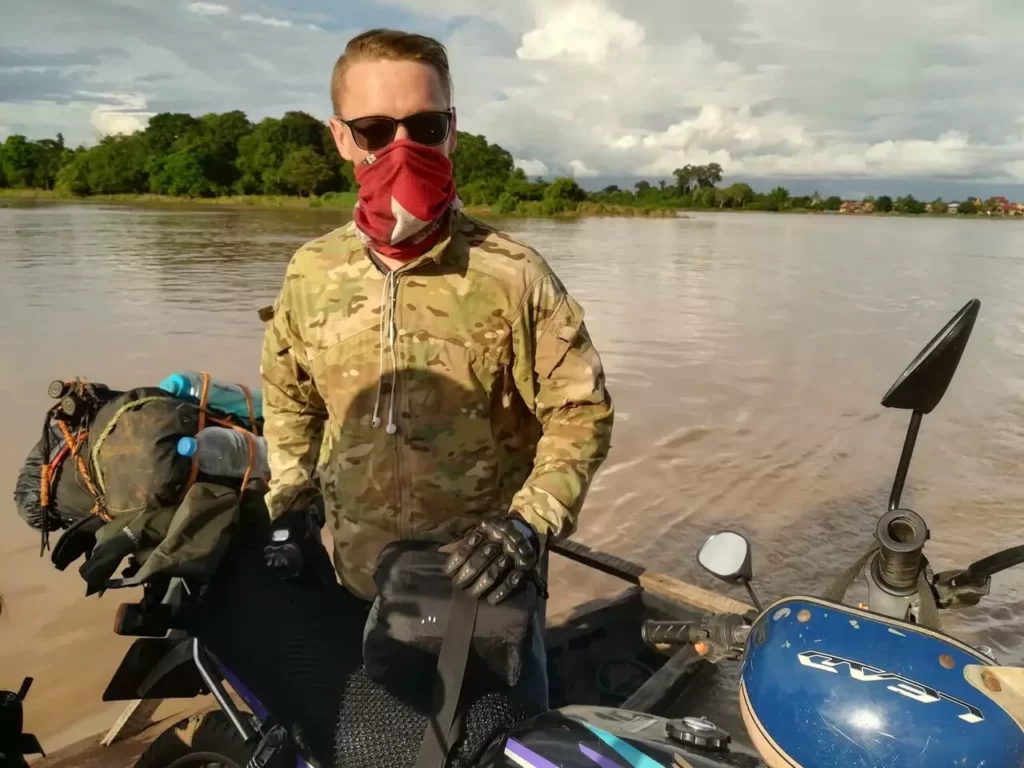
My Ride on the Bolaven Plateau Loop
I set out on the Bolaven Plateau Loop with three simple goals: ride some scenic roads, drink world-class coffee, and chase as many waterfalls as I could find, and let me tell you, the loop didn’t disappoint. After attending Mrs. Noi’s famous nightly briefing in Pakse, packed full of useful tips and safety advice, I linked up with a friendly French-Canadian couple who were also planning to start the loop the next day. We hit it off straight away and decided to ride together.
Day One: Tad Lo Bound We left Pakse on a cool, overcast morning. The road out of the city was flat and uneventful, just a straight shot on decent tarmac, bordered by sleepy villages and occasional roadside stands. When the road forked, we chose the left path, officially committing to riding the loop clockwise. Our destination for the day was Tad Lo, and we hoped to get there before dark.
We made a few casual stops along the way, including Pha Suam waterfall. Honestly, it didn’t blow us away, but it was a decent place to stretch our legs. One tip we’d picked up at the briefing was to always use designated parking areas at tourist spots. Apparently, bike theft isn’t unheard of, especially if you park randomly and walk off. We followed the advice and paid the modest fees, usually less than a dollar.
Our real highlight of the day came later at Tad Soung waterfall. Towering 90 meters above the valley floor, this place was epic. You can stand right at the top and watch the water tumble off the cliff, or take the path to view it from below. I had my drone with me, and the aerial shots turned out incredible.
We arrived in Tad Lo village just before nightfall and found a steal of a deal at Pakeo Guesthouse, $4 for a private room. After dropping our bags, we crossed the river to catch the daily elephant bath. It felt like a scene from a movie, no crowds, just the elephants playing in the water as the sun went down. We ended the night with some beers and a simple meal, ready to rest up for the next leg.
Day Two: Cultural Encounters and Muddy Roads We hit the road early and made our way to the small village of Kok Phoung Tai. There, we met Mr. Hook, a charismatic local guide and proud member of the Katu community. He showed us around his village, sharing stories about their customs and daily life. I learned that kids start smoking tobacco through water bongs as young as three to ward off mosquitoes, and that my blue eyes were assumed to be the result of drinking too many fizzy drinks. Fascinating stuff.
After a couple of hours, we hopped back on our bikes and rode deeper into the eastern side of the loop. The scenery started to change, more jungle, more hills, fewer tourists. We stopped at Tad Faek waterfall, but honestly, it was a bit grim. The area looked abandoned and littered with rubbish. If you’re tight on time, this is one to skip.
Rain caught us off guard shortly after, so we ducked into a fuel station for shelter. Luckily, the downpour didn’t last long, and we continued to Sekong for fuel and food. After lunch, we turned off toward Ban Houaykong, a small village 20 km off the main road. The route offered some fantastic views, though parts of it were gravel and required caution.
We weren’t impressed with the lodging options in Ban Houaykong, so we pushed on to Tad Tayicseua Homestay, a jungle retreat we’d heard great things about. Getting there was a bit of a challenge, recent rains had turned the track into a muddy mess. Our travel buddies had a couple of minor spills but powered through like champs. We rolled in tired but happy. The homestay had friendly dogs, gorgeous jungle views, and hearty homemade food.
Day Three: Waterfalls and River Crossings I woke up to the soothing sounds of the jungle and mist drifting through the trees. After breakfast, we hiked down to Tad Tayicseua with two enthusiastic dogs leading the way. The falls were stunning, though the foggy weather muted some of the magic. Still, it felt raw and wild, like something out of a nature doc.
We saddled up and took on the muddy track again, this time with a bit more confidence. Our next stops were Tad Yuang and Tad Fane. Tad Yuang had a peaceful garden area and steps leading down to the main cascade. I tried getting closer for a dramatic photo, got soaked in the process, and returned to my laughing girlfriend with no usable shots. Worth it? Absolutely.
Tad Fane was the showstopper, two waterfalls plunging 120 meters into a lush jungle canyon. It’s the most touristy of the bunch, complete with a zipline if you’re feeling brave. From there, we rode to a nearby blacksmith village for coffee and a quick tour.
We decided to keep riding and make our way to Champasak. Instead of going back to Pakse, we opted for a Mekong river crossing. We reached the “ferry,” which was really just a glorified fishing boat. Somehow, it held all our bikes and got us across. We stayed at Champasak With Love, $4 for a comfy room and a sunset view over the river. A few beers later, we called it a night.
Day Four: Temples, Repairs, and the Finish Line After shaking off a mild hangover from a few too many beerloas the night before, we rode toward Wat Phou. Just outside of town, my luggage rack snapped. Fortunately, a roadside mechanic fixed it on the spot for just $2.50, one of the most affordable saves of the trip. Wat Phou itself was brilliant: centuries-old ruins with a view, blending Khmer and Buddhist history. It’s smaller than Angkor Wat but older and more intimate.
After a few hours exploring, we rode back to Pakse via a scenic riverside route. It was about 50 km, and the sun was shining the whole way. As we crossed the bridge into the city, I couldn’t help but reflect on the past few days. Jungle, culture, waterfalls, mishaps, and memories, it was everything I’d hoped for and more.
Some advice? Always pack a rain poncho, keep your sense of humour, and never underestimate the value of a good travel buddy. The Bolaven Plateau Loop is one of Southeast Asia’s hidden gems, and if you’ve got a bike and a bit of curiosity, it’s calling your name.
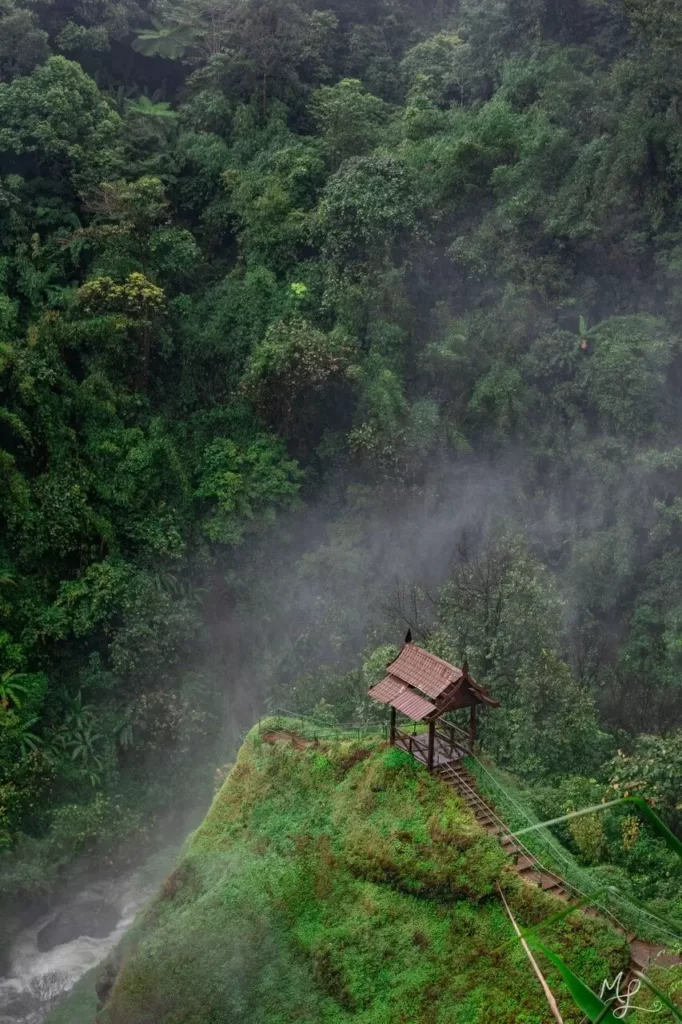
Top Tips for Riding the Bolaven Plateau Loop
1. Don’t Miss Mrs. Noi’s Daily Briefing
If you’re starting your loop from Pakse, head to the nightly info session at Mrs. Noi’s. It’s full of golden nuggets, route advice, cultural tips, and even a chance to meet fellow travellers to ride with. It was during this briefing that I linked up with my riding crew.
2. Always Carry Cash
ATMs aren’t exactly dotted along the loop, and card machines are basically nonexistent in most villages. Bring enough kip to cover food, fuel, accommodation, and a few unexpected detours or welding jobs.
3. Park Smart
Always park your bike in designated parking spots, especially at waterfalls. Most places charge less than a dollar and having a parking attendant gives you peace of mind. Bike thefts have happened when people just parked randomly and wandered off.
4. Avoid Riding at Night
The roads are unlit, unpredictable, and often shared with everything from water buffalo to 18-wheelers. Try to reach your destination before sunset to avoid unnecessary drama.
5. Be Ready for Mud
After rain, parts of the loop turn into full-on bogs. If you’re heading to Tad Tayicseua or any homestay down a dirt track, go slow and steady. I saw more than one person take a tumble after underestimating how slick things can get.
6. Choose the Right Waterfalls
Not all waterfalls are equal. Tad Faek? Meh. Tad Soung, Tad Yuang, and Tad Fane? Epic. If you’re short on time, prioritize the big hitters.
7. Homestays Over Hotels
Places like Tad Tayicseua Homestay offer great food, comfy rooms, and jungle views, not to mention a few friendly dogs. Plus, they’re more authentic and often more fun than generic hotels.
8. Take It Slow Through Villages
Not just for safety, these quiet towns give you a glimpse into daily Lao life. Stop for a roadside coffee or a meal and soak it all in. Some of my best food came from tiny places with no name.
9. Expect (and Embrace) the Unexpected
Whether it’s a makeshift garage fixing your luggage rack for $2.50 or an impromptu river crossing on a boat that looks like it shouldn’t float, you’ve just got to roll with it. That’s the magic of the loop.
10. Bring a Camera or a Drone
You’ll kick yourself if you don’t. The Bolaven Plateau is packed with epic landscapes, misty waterfalls, and lush jungle, all perfect for capturing with a camera or drone. Whether it’s wide drone shots of Tad Fane or candid village moments, the scenery is worth documenting. Just make sure to pack rain protection for your gear, weather can shift fast out there.
11. Pack for All Weather
Laos can throw four seasons at you in one day, sun, fog, and tropical downpours are all on the menu. Pack a light rain jacket, layers for cooler mornings, and a dry set of clothes stored in a waterproof bag. You’ll thank yourself when the skies open up or temps drop on those higher stretches of the plateau.

Final Thoughts: Why This Loop is Worth Your Time
Riding the Bolaven Plateau Loop wasn’t just another item ticked off my route, it was an experience that stuck with me. The mix of scenery, culture, quiet roads, and strong coffee made it one of the best parts of my Laos adventure.
It’s the kind of place that invites you to slow down, wave back at curious kids, sip coffee under the shade of banana trees, and maybe even rethink your travel pace. If you’ve got a few days to spare in southern Laos and access to a motorbike, do yourself a favour and take the loop.
Helmet on. Engine humming. Waterfalls, winding roads, and caffeine-fueled mornings await.
